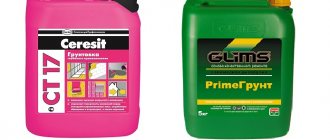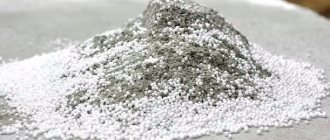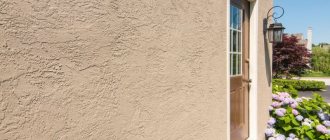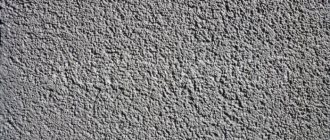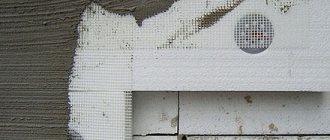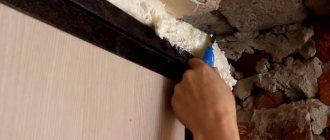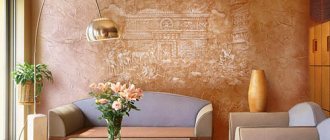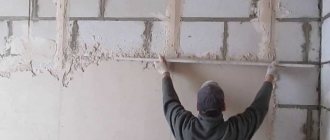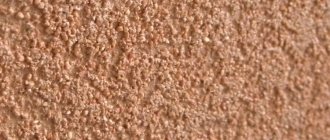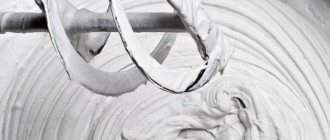Smooth, decorated walls serve not only as a backdrop for the decor. They are a means of expressing the taste and skill of the home owner. When decorating the exterior of a house and its interior space, they are increasingly abandoning wallpaper and featureless, flat wall surfaces. Mineral plaster is a wall-leveling coating and decorative finish.
Types of mineral plaster
Mineral plasters have grown into one big family, which has its own:
- Cinderellas for rough work - simple compositions;
- orderlies who cure chronic dampness of walls use sanitizing compounds that prevent the appearance of efflorescence;
- “jammers” – acoustic plasters that form soundproofing screens;
- “fur coats” – heat-insulating or warm compounds for thermal insulation of walls;
- border guards – waterproofing plasters 100% waterproof;
- plushkins, which collected shiny pebbles, mica, perlite, shell fragments, sparkles - structural plasters;
- “old ladies” – craquelures dressed up like antiquity;
- Beautiful Vasilisa - Venetian.
In addition, they now produce mixtures called mineral decorative plaster.
In total, by purpose it is:
- decorative;
- ordinary;
- special.
By place of application:
- mixtures for interior finishing;
- mineral plasters for facades (with additives that contribute to the durability of the coating);
- universal.
All this variety is obtained by using modifying additives, the type, and the proportions of the components of the composition.
By fraction size
Parts of bulk filler material, separated by particle size, are called fractions.
Plasters are:
- up to 0.5 mm - fine-textured (in fact, this is stone flour, for Venetians and Moroccans);
- fine-textured -5-1 mm (for indoors);
- 5-3.0 - medium texture (universal);
- large-textured (for facades) - 3.5-4.0 mm;
- > 5 mm - rough textured.
The fineness of the fraction determines the quality of the surface - texture, as well as workability and the required amount of binder.
By application effect
Two types that achieve the effect differently are textured and structural mixtures. The first creates a decorative look for the walls using color and application methods. The second is the presence of various fillers with different ganulometric compositions, as well as methods of applying the solution. A textured mixture cannot accomplish what can easily be accomplished with a structural mixture, for example, surfaces with a bark beetle effect. Moroccan, craquelure, and Venetian are not feasible structurally.
Dry mixtures are produced, as well as ready-made decorative compositions for creating the effects of “bark beetle”, fur coat, travertino, Venetian, wet silk and others.
Depending on the filler
Fillers are materials added to the composition in order to reduce the consumption of expensive binders and form a semblance of a skeleton in the hardened solution. They significantly reduce the shrinkage of the hardening mass, preventing crack formation, and, in some cases, give the composition additional qualities.
Most often, fillers are inert (do not react chemically).
Fillers are:
- light (using a filler whose volumetric weight is < 1000 kg/m3, a light mineral plaster is obtained);
- heavy (volume weight > 1000 kg/m3).
Light types of filler include:
- expanded vermiculite;
- sawdust;
- pumice;
- charcoal;
- slags;
- straw chaff, etc.
List of heavy fillers:
- sand;
- rock flour;
- stone chips;
- clay.
Based on the size of filler particles, compositions range from coarse-grained (> 5 mm) to fine-grained (< 05 mm).
By type of filler:
- decorative compositions may contain anthracite (a mixture of dark colors), glass beads, quartz sand, onyx chips, lapis lazuli, marble;
- mosaic (with crumbs of 2-3 types of stone);
- colored (with blue, yellow, red clay);
- terrasite (contains mica);
- asbestos-cement (fire-resistant, does not crack due to asbestos fibers, resistant to low temperatures, waterproof: rarely used for thermal insulation );
- pebble.
Composition and characteristics of mineral plasters
Basic components of the composition:
- Binder: one type in simple compositions, for example, cement; two or three types of binders - in complex compositions. Of which one is the main one, the second is auxiliary, for example, cement-lime, etc.
- Filler (depending on the type of composition - light, structuring or insulating, or heavy).
- Plasticizers (substances that facilitate the laying of PVA mixtures, etc.).
- Modifying additives (fire retardants, biocides, antifreeze).
- Pigments (natural or synthetic dyes).
- Tap drinking water or sediment water (clean, zero acidity, without sulfates.).
The ratio of the main components of the solution is written as a formula in the form 1:3 or 1:1:4, which indicates the proportional volume ratio of the binders and filler. The first number is the main binder, for example, cement, the second (of three numbers) is an additional binder, for example, lime or gypsum, the last number is the filler. For example, the entry for cement-asbestos 1:4 means: 4 parts of asbestos are taken for 1 part of cement. The notation 1:1:5 for a cement-lime mortar means that you take one part of cement and dough (lime), and 5 parts of sand.
Characteristics include:
- specific (excluding pores) / volumetric weight (bulk), kg/m3;
- proportions of dilution with water;
- strength (expressed in the grade of finishing coating kg/cm2);
- setting time (life), min;
- maximum/minimum possible layer thickness;
- approximate consumption per 1m2;
- air temperature and humidity;
- adhesion (tenacity);
- drying time/gain of full strength.
Application for finishing
Typically, decorative mineral plaster is used to finish the wall:
- Its unusual texture creates an original style, does not require additional covering with wallpaper or paint, lasts for a long time and does not require maintenance.
- This is a practical and safe design for the interior walls of children's institutions and public buildings. In residential premises, mineral coating is used less frequently.
If the customer wishes, such a surface can be coated with matte paint or varnish:
- Coloring compounds are added to the mixture or natural color is used.
- A thin layer of mineral mixture gives an unusual look to a pre-painted wall.
- It is preserved, but the color of the wall is somewhat muted and softened.
- Mineral inclusions enhance the surface.
- If you additionally coat it with transparent varnish, the original color of the wall will shine through even brighter.
- Depending on the type of filler, the plaster can be textured, rough or smooth.
- Available in pebble, silk or grooved finishes.
Note. For many years, builders have been using facade plaster, which is called “fur coat”. It is laid out in regular geometric medallions or placed in a strip around the perimeter of the house.
Advantages and disadvantages of mineral plaster
Basically, these characteristics depend on the composition.
Pros:
- environmentally friendly;
- durable;
- vapor permeable;
- fireproof;
- inexpensive;
- low-shrink;
- highly adhesive;
- not afraid of moisture;
- frost-resistant.
Minuses:
- afraid of vibrations, the smallest movements or deformations of the base;
- less resistant to ultraviolet radiation;
- The mixtures should be stored in a dry place and in sealed packaging;
- not elastic
Comparison with other plaster mixtures
Mineral facade plaster for exterior use is usually made with cement. Such mixtures adhere well to the base, cost the home owner less than other types, and are often used both for leveling walls (rough finishing) and for finishing. However, where there are railway tracks nearby, it is not recommended to use it in areas with seismic hazard due to increased fracturing. In this case, silicone and acrylic compounds work better due to their elasticity. These two species have a richer palette.
Without taking into account special mixtures, comparison with silicone, acrylic and silicate leads to the following conclusions:
- Due to the lack of elasticity, mineral plaster is not suitable for areas with high seismicity, near railway lines, where it becomes covered with cracks, and is inferior to elastic silicone or acrylic plaster.
- Due to the availability, as well as the low price of the components of the composition, mineral is cheaper to purchase than other types.
- In terms of safety and comfort, mineral is preferable in residential areas, especially lime, gypsum or clay.
- In terms of strength, MS is not inferior to others.
- Acrylic is inferior to the others when applied to façades, as it is not very resistant to ultraviolet radiation and fades quickly. It is also not applicable near flame sources or in places with high temperatures. It is not recommended for use in bedrooms or living rooms due to low vapor permeability.
- Silicate is suitable for facades, but is not suitable for indoors because it releases harmful substances during application and hardening. It is more expensive, requires a silicate primer, and special coloring compounds (also expensive).
- Silicone is significantly more expensive than all other types. However, in terms of working quality it outperforms them. For facades, due to the cost savings, mineral or acrylic ones are more often used than silicone ones.
External use
Due to its properties of resistance to moisture and temperature changes, mineral decorative plaster is widely used for the design of external facades of buildings:
- This is a durable and beautiful wall decoration that will last for many years.
- Individual elements of facades are highlighted using mineral plaster, or the entire surface is completely sealed.
Note. The composition is not subject to fire, so for fire safety purposes it is good to use it to decorate walls and partitions made of flammable materials - plasterboard, chipboard, wood.
Mineral plasters have a rough surface with visible particles of mineral chips:
- They are used only for decorative purposes.
- The mixtures are applied to a leveled surface with differences in convexity eliminated, with dents and cracks masked.
- If the wall is not carefully prepared, the flaws on it will be even more visible.
A thin layer of mineral mixture will not be able to seal them.
Usage
The scope of application is almost all types of leveling work and most decorative ones. Where cement compositions are not suitable, lime or gypsum compositions come to the rescue. For example, for weak walls that are not able to withstand the load of heavy cement coatings, gypsum mixtures are used.
Application for initial roughing work
It can be argued that it is difficult to find a replacement for mineral plasters here. It is used to level the facade of the house, walls of rooms, ceilings and floors, applied as a protective layer to sheet insulation, and pipes are covered with asbestos-cement mortar. For initial work, the adhesive characteristics of the solutions are important, as well as the maximum and minimum (for clay compositions) permissible layer thickness. MSs give in only to smooth substrates, such as plastic and smooth concrete.
Application for interior work
Mineral plasters for interior use are usually made with lime or gypsum. They absorb moisture from the air when its content is high and return it when its content is low. Lime and gypsum mixtures create and regulate a comfortable microclimate, which is why they are preferable in bedrooms, living rooms and... in toilet rooms.
For use in rooms with high humidity, it is necessary to take measures to install insulation in places of direct contact with water.
Outdoor use
Since street conditions are harsh, the main binder of mineral plaster is cement. Mineral compounds are used to cover house , fences, retaining walls, and gazebos. Lightweight compounds designed for wall insulation are popular. To waterproof the foundation and plinth from ground and surface water, waterproofing mineral solutions are used. In winter - mineral winter mixtures.
Application for decorative final works
For decoration, decorative plaster is used for interior wall decoration, selecting mixtures based on lime, white cement, gypsum or colored clay. Most often, dry or ready-made mixtures are used. Two main types - textured and structural plasters are applied in different ways, depending on the desired effect. The pattern appears with special movements of the trowel (for example, Versailles) or during the drying process (craquelure), cutting (sgrafitto), using a stencil or improvised means.
Popular mixtures include travertine, bark beetle, and Venetian. The walls on landings, loggias, and plinths are covered with pebble or terrazite plasters, as well as coarse-grained compounds. In rooms - mixtures with medium or fine filler. Internal finishing is done mainly by hand. After the coating has dried, it is painted, waxed or varnished. Such coatings can be washed after a couple of weeks.
Cost of materials for facade finishing
Cement-based mineral plaster with polymer additives and pigments is used to apply the material to any building facades.
Depending on the manufacturer, the cost ranges from 400 to 900 rubles per 25 kg bag of mixture.
Facade plaster is made from inexpensive and scarce components, and therefore its cost is in the range of economy-class goods. Any developer can use it for work.
Facade plaster Terol granules has a low price - 560 rubles. Weber min plaster Weber min Bark beetle costs about 800 rubles, and Knauf-Diamant costs only 340 rubles per bag.
Plaster 139 Capatect-Mineral-Leichtputz is a finishing material that consists mainly of natural components. It has 2 textures: “bark beetle” and structural plaster “fur coat”, which have different grain sizes. Price - up to 900 rubles per 25 kg of mixture.
When choosing a plaster mixture, take into account the condition of the building’s facade, the time of work, and your financial capabilities.
Finishing facades with decorative plaster is a fashionable trend, which, due to its high quality and low price, is now very often used for repair and restoration work.
Decorative mineral plaster is a thick composition consisting of natural components, used for finishing work indoors and outdoors. It has become an excellent alternative to wallpaper and, depending on the type, makes it possible to create a variety of wall textures. For cladding facades, material from this series is used: bark beetle or special pebble plaster. Using San Marco plasters, such as Marmo Dautore, you can also finish balconies.
The surfaces created using this material retain their original appearance and layer thickness for a long time. The manufacturer also offers mineral. Its undeniable advantages include high vapor permeability and moisture resistance.
Modern mineral plasters are a unique combination of environmental impeccability and aesthetic perfection.
Technique for applying mineral plaster
Applying plaster can be done using various techniques. It depends on the effect and how the layer is processed. But there are common details for most techniques, which will be described below.
Preparing walls before plastering
Before applying plaster mixtures, prepare the base. The most demanding is the Venetian, through which all the irregularities are visible. Volumetric textured and structural mixtures are less demanding.
The poorly adhering old base is removed. Potholes and cracks are repaired. If the leveling layer is thick, use a mesh. Remove rusting metal objects, clean the surface from stains of grease, paint, fungus or mold, and dust. Then cover with a primer and apply a leveling layer.
If the walls are leveled, then beacons are placed. For decorative finishing, make preliminary markings, stick masking tape along the boundaries of the areas, and mark the lines of the design. A painting/plaster mesh is attached to the soft insulation.
Tool
For work use:
- buckets;
- trowels;
- graters;
- trowels;
- brushes;
- spatulas;
- rollers (for priming, applying texture, painting);
- sponges;
- rule;
- level;
- mixer;
- containers;
- masking tape;
- rags, etc.
Application
Application can be single or multi-layer (depending on the finishing technique). The decorative mixture can be applied in different ways. You can transfer it to the wall with a trowel, holding the tool at an angle of 15 degrees to the wall surface, moving the trowel in a straight line or in an arc. Some techniques require applying wet on wet (starting a stroke on an already laid solution) or wet on dry with a conclusion to wet. There are techniques where the mixture is transferred with a roller (a thin layer) or with islands of a trowel.
According to the classic scheme for applying an even layer, it is applied vertically with a trowel, starting from the corner of the room (towards the next corner). They try to apply the solution in a layer close to the minimum. After filling the intended area (1-1.5 m2), the layer is smoothed out, making it thinner. And begin applying the solution to the next area. They work quickly, since the lifespan of mineral mixtures is short. Having reached the corner, they begin to plaster the next row. And so on until plastering of the wall is completed.
If you need to take a break, apply masking tape to the wall and plaster it with a slight overlap. The tape is removed. Before continuing work after a break, stick tape over the edge of the laid layer and continue applying the layer from it.
Preparing walls before plastering
First you need to get rid of the old finish, all defects must be eliminated, cracks must be closed. If leveling requires a thick layer, then a mesh should be used. The surface is cleaned of all types of contaminants and degreased. Apply primer and leveling layer.
The surface is cleaned of all types of contaminants and degreased.
Popular manufacturers
Among the most famous and popular brands that have won recognition for their quality, we can note the products of Russian and foreign companies:
- Volma;
- Ceresite;
- Bayramiks;
- Baumit;
- bolars;
- Knauf;
- Caparol.
Mixtures are sold in craft bags, and ready-to-use pastes are sold in plastic buckets. The packaging contains the necessary information and instructions, which spell out what needs to be done and how to ensure that the coating comes out of decent quality.
If we talk about prices, the prices of Russian producers are lower than those of foreign ones. But here the market contributed its share. Well-known brands are often more expensive. The highest price is for Venetian mixtures.
The article provides information about mineral plasters for various purposes in a volume sufficient for first acquaintance. Armed with this information, you will feel more confident when solving repair or construction issues.
